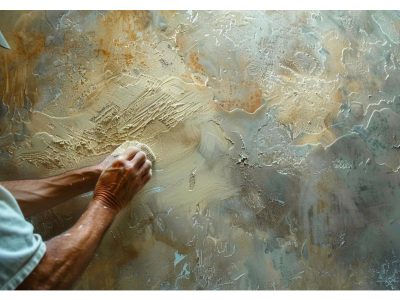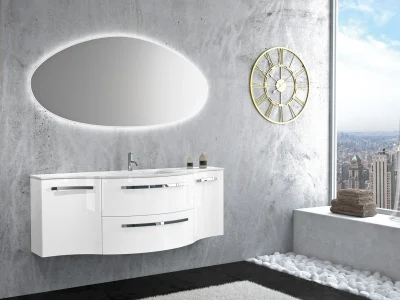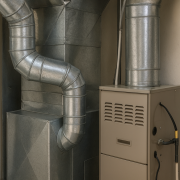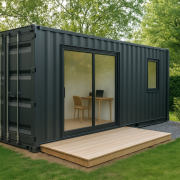When homeowners think about improving home comfort or lowering energy bills, their first instinct is often to upgrade major HVAC equipment such as a Gas furnace or an Air conditioning unit. While replacing these systems can certainly improve performance, many overlook one of the most influential—and commonly flawed—components of the entire heating and cooling process: the ductwork. The design, layout, sizing, material, and construction of your ducts determine how efficiently air can be delivered throughout your home. Poorly designed duct systems can reduce the effectiveness of a residential furnace or an AC unit by as much as 30%–50%, even if the main equipment is new and highly efficient.
Understanding how ductwork influences performance helps homeowners make informed decisions about upgrading equipment, redesigning airflow, or enhancing energy efficiency. This article explores how ductwork design affects both heating and cooling efficiency, the technical and practical trade-offs involved, the challenges of implementation, and why evaluating duct systems should be part of any major HVAC decision.
Why Ductwork Design Matters More Than Most Homeowners Realize
Many homes have duct systems that were installed when the house was first built, often designed quickly or with cost-saving shortcuts. Over time, as equipment is replaced or as additions are built, the original ducts may no longer match the airflow needs of newer systems. Even the most efficient gas heating system or Air Conditioning system cannot perform well if airflow is restricted, unbalanced, or leaking.
Several core functions of a duct system influence HVAC efficiency:
- Airflow distribution
- Pressure balance
- Thermal retention (minimizing heat loss or gain)
- Noise control
- Equipment compatibility
When any of these factors is compromised, the entire HVAC system must work harder. That not only increases utility bills but also strains the equipment, shortening its lifespan and reducing comfort.
How Duct Size and Layout Influence Heating and Cooling Efficiency
One of the most influential factors in ductwork design is sizing. Ducts must be matched to the airflow requirements of the equipment. If ducts are too small, air velocity increases, causing friction losses and higher static pressure. If they are too large, air slows down so much that rooms may heat or cool unevenly.
1. The Impact of Undersized Ducts
Undersized ducts create excessive static pressure. In a residential furnace, this increased pressure forces the blower motor to work harder, which can eventually lead to overheating or premature failure. In cooling mode, the restricted airflow prevents adequate heat exchange at the evaporator coil, sometimes causing coil freezing or reduced cooling capacity.
Beyond equipment stress, the homeowner may notice:
- Strong airflow in one or two rooms
- Weak airflow in others
- Longer heating and cooling cycles
- Higher utility bills
2. The Impact of Oversized Ducts
Oversized ducts may seem harmless, but they create their own issues:
- Air travels slowly, causing long delays in temperature changes
- Rooms farthest from the equipment may never reach the desired comfort level
- The system may short-cycle, increasing wear
Balanced design is essential. HVAC professionals rely on Manual D calculations to determine the ideal duct size based on airflow (CFM), equipment capacity, and home layout. Without proper sizing, even the best gas heating system or AC unit cannot operate at optimal performance.
The Role of Duct Material and Insulation
Duct material affects efficiency, durability, noise, and heat transfer. Most homes use sheet metal ducts, flexible ducts, or fiberboard ducts, each with distinct advantages and challenges.
Sheet Metal Ducts
These are durable, rigid, and efficient for airflow but require proper sealing at seams. Without sealing, metal ducts are prone to leakage. They also transmit noise more easily, meaning poorly designed systems might produce rattling or echoing.
Flexible Ducts
Flex ducts are cheaper and easier to install, which makes them popular in modern construction. However, they pose several risks:
- They can become compressed, restricting airflow
- Long runs increase airflow resistance
- Poor installation leads to sagging or twists
Their ease of installation is both a benefit and a drawback—quality depends entirely on the skill of the installer.
Fiberboard Ducts
Fiberboard ducts are naturally insulated and quiet, but the porous material may not be ideal for all situations. They can accumulate dust, absorb moisture, and reduce airflow if deteriorated.
Importance of Insulation
Insulation minimizes thermal loss in winter and thermal gain in summer. Uninsulated or poorly insulated ducts in attics, crawl spaces, or garages can dramatically reduce the performance of both heating and cooling systems. Up to 20–30% of conditioned air can be lost if ducts are uninsulated or leaky.
The Effect of Duct Leakage on Energy Efficiency
Duct leakage is one of the most common, yet least recognized issues affecting residential HVAC systems. Even minor leaks can lead to dramatic energy loss.
Consequences of Duct Leakage
- Loss of conditioned air
When heated or cooled air escapes into unconditioned areas, the equipment must run longer to compensate. - Reduced air pressure
Leaks lower the available air pressure, which compromises airflow to rooms. - Increased equipment wear
Longer run times strain the system and increase repair frequency. - Poor indoor air quality
Leaky return ducts can pull air from attics, crawl spaces, or basements, bringing pollutants into living areas.
Sealing ducts with mastic or metal-backed tape is one of the most cost-effective ways to improve HVAC efficiency.
Balancing Airflow: Supply and Return Duct Considerations
A balanced airflow system requires both supply and return ducts to move air efficiently. Many homes have adequate supply ducts but insufficient return ducts, creating pressure imbalances.
Why Return Air is Critical
Return ducts pull air back to the HVAC system. Without enough return pathways:
- Rooms can become pressurized or depressurized
- Airflow through the system decreases
- Equipment efficiency drops
- Comfort becomes inconsistent
A gas heating system may run longer cycles to try to pull enough air across the heat exchanger. An Air Conditioning system may struggle to remove humidity or maintain stable temperatures.
Installing additional return ducts, or using return air grilles in every major room, is often necessary for proper balance.
Airflow Resistance and the Role of Filters and Dampers
Air filters, dampers, and transitions also influence airflow resistance in the duct system. Even if ducts are sized correctly, these components can reduce efficiency.
Filters
Filters that are too restrictive increase static pressure. High-MERV filters may improve indoor air quality but can impede airflow if not chosen correctly. Homeowners must balance filtration needs with airflow requirements.
Dampers
Manual or automatic dampers control airflow to different zones. Poorly adjusted dampers may restrict airflow, force air into the wrong rooms, or cause temperature imbalances. Zoned systems offer improved comfort but require careful engineering to maintain system pressure and equipment performance.
Transitions
Duct transitions that are poorly shaped or sized create turbulence, reducing airflow. Smooth, gradual transitions reduce friction and maintain airflow consistency.
Trade-Offs in Ductwork Design Decisions
Homeowners and HVAC professionals must consider multiple trade-offs when designing or modifying ductwork.
1. Efficiency vs. Cost
High-efficiency duct systems require:
- Superior insulation
- Larger ducts or multiple branches
- Precision design and professional installation
This increases upfront costs. However, the long-term energy savings and equipment longevity often justify the investment.
2. Performance vs. Space Constraints
Modern homes, especially renovations, face physical limitations:
- Tight attics
- Narrow walls
- Limited crawl space
Sometimes ducts must be rerouted creatively, leading to compromises in ideal sizing or layout.
3. Filtration vs. Airflow
Higher filtration improves indoor air quality but may reduce airflow if not matched correctly with the system. Homeowners must determine whether allergen control or maximum efficiency takes priority.
4. Flexibility vs. Durability
Flexible ducts are easier to install in tight spaces but are more susceptible to damage and airflow restrictions. Metal ducts are durable but harder to install and modify.
5. Zoning vs. System Stress
Zoned systems offer improved temperature control but increase complexity. If controls or dampers fail, the residential furnace or AC system can experience pressure issues.
Understanding these trade-offs allows homeowners to choose the best combination of efficiency, comfort, and cost for their needs.
Challenges in Retrofitting Ductwork
Upgrading ductwork in an existing home is significantly more challenging than installing in new construction.
1. Limited Access
Attics may be cramped, basements may be unfinished, and walls may be sealed. Retrofitting often requires creative problem-solving or selective demolition.
2. Unknown Conditions
Older homes may hide:
- Damaged ducts
- Poorly sealed transitions
- Asbestos-containing materials
- Code violations
These issues must be corrected to ensure safe and efficient operation.
3. Equipment Compatibility
A new Air Conditioning system or gas heating system may require more airflow than existing ducts can provide. Many homeowners install new equipment without upgrading ductwork, leading to disappointing performance and premature failure.
4. Cost Concerns
Ductwork upgrades can be expensive. Homeowners must weigh the benefits—reduced bills, better comfort, improved indoor air quality—against the cost of redesign.
The Importance of Professional Duct Design and Testing
Duct systems should ideally be evaluated by a qualified HVAC professional using:
- Manual D for duct design
- Manual J for load calculation
- Manual S for equipment selection
These tools ensure that both the equipment and ducts work together efficiently. Professional testing using a duct blaster or static pressure test can reveal leaks, pressure issues, and airflow problems that cannot be detected visually.
Airflow Testing
Airflow testing confirms that each room receives the correct CFM. If airflow is too low or too high, comfort and efficiency suffer. Testing ensures that the system is balanced.
Pressure Testing
Static pressure tests determine whether the duct system is too restrictive. Excessive static pressure is a major cause of equipment failure and poor performance.
Why Homeowners Should Prioritize Ductwork Before Replacing HVAC Equipment
A common mistake homeowners make is replacing a residential furnace or Air Conditioning system without evaluating the duct system. New, high-efficiency equipment cannot overcome poor duct design, and homeowners may blame the equipment for comfort problems that originate from the ducts.
Benefits of Improving Ductwork First
- Lower heating and cooling bills
- Better comfort consistency across rooms
- Longer equipment life
- Quieter operation
- Improved indoor air quality
In many cases, duct improvements offer more immediate and cost-effective benefits than equipment replacement.
Wrapping Up: Ductwork Design Is a Critical Part of Home HVAC Efficiency
Homeowners often assume that the primary determinants of heating and cooling efficiency are the furnace or AC system itself. However, ductwork design has an equal, if not greater, influence on comfort, performance, and energy use. Proper duct sizing, layout, insulation, sealing, and airflow balancing ensure that both heating and cooling equipment operates as intended.
Although optimizing ductwork involves balancing costs, space limitations, and performance expectations, the investment pays off through lower utility bills, enhanced comfort, and longer system life. Whether upgrading equipment or simply trying to improve efficiency, homeowners should recognize that ductwork is not an afterthought—it is a fundamental part of the HVAC ecosystem. By understanding its impact and working with qualified professionals to evaluate and improve duct systems, homeowners can achieve a more efficient, comfortable, and reliable home environment.














Comments